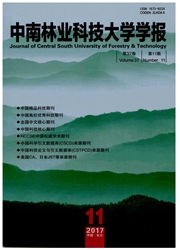

 中文摘要:
中文摘要:
由于栅格数据和矢量数据存在着各自的优势,在地理信息系统中通常要进行栅矢数据间的转换。在栅格数据矢量化过程中,由于数据质量或算法的原因,经常导致结果变形,出现锯齿状和吊葫芦现象。设计一种高效、高精度的平滑算法,对于地理信息系统中的线和面对像的处理具有重要意义。对常用算法的平滑效果进行了总结和分析,在对矢量化过程和数据不确定性分析的基础上,提出了一种概率中值平滑算法,并设计了算法的实现方法,并经过编程和扫描多边形进行试验。结果表明,该方法很好地消除了矢量化过程中易产生的锯齿状和吊葫芦现象,平滑速度快,精度高,可以在地图线条矢量化和遥感图像分割对象边界处理以及栅格文字矢量化过程中应用,为线条的高精度快速矢量化软件编制奠定了基础。
 英文摘要:
英文摘要:
Since raster data and vector data have their strengths,in the GIS system data conversion between the vector data raster data were usually conducted.In the process of raster data vectorization,there was different data quality or algorithm,often leading to deformation,the phenomenon jagged and "hanging gourd".Designing an hight-efficient,high-precision smoothing algorithms for geographic information systems as the processing line and the polygon is of great significance.Commonly used smoothing algorithms in GIS were summarized and analyzed.Based on the analysis on the process of vectorization and vector data uncertainty,a median probability smoothing algorithm has been proposed,and an algorithm implementation has been designed.The implementation programmer was developed with Matlab platform and a smooth test was carried out with a scanned polygon.The results show that the algorithm eliminated the phenomenon of the jagged and "hanging gourd" produced easily in the vectorization,the software oparation fasted and had a high precision.The algorithm can be applied to the line vectorization of map and object boundary vector processing with remote sensing image segmentation,thus lay on a foundation for developing of the software of high-precision and rapid line vectorization.
 同期刊论文项目
同期刊论文项目
 同项目期刊论文
同项目期刊论文
 期刊信息
期刊信息
